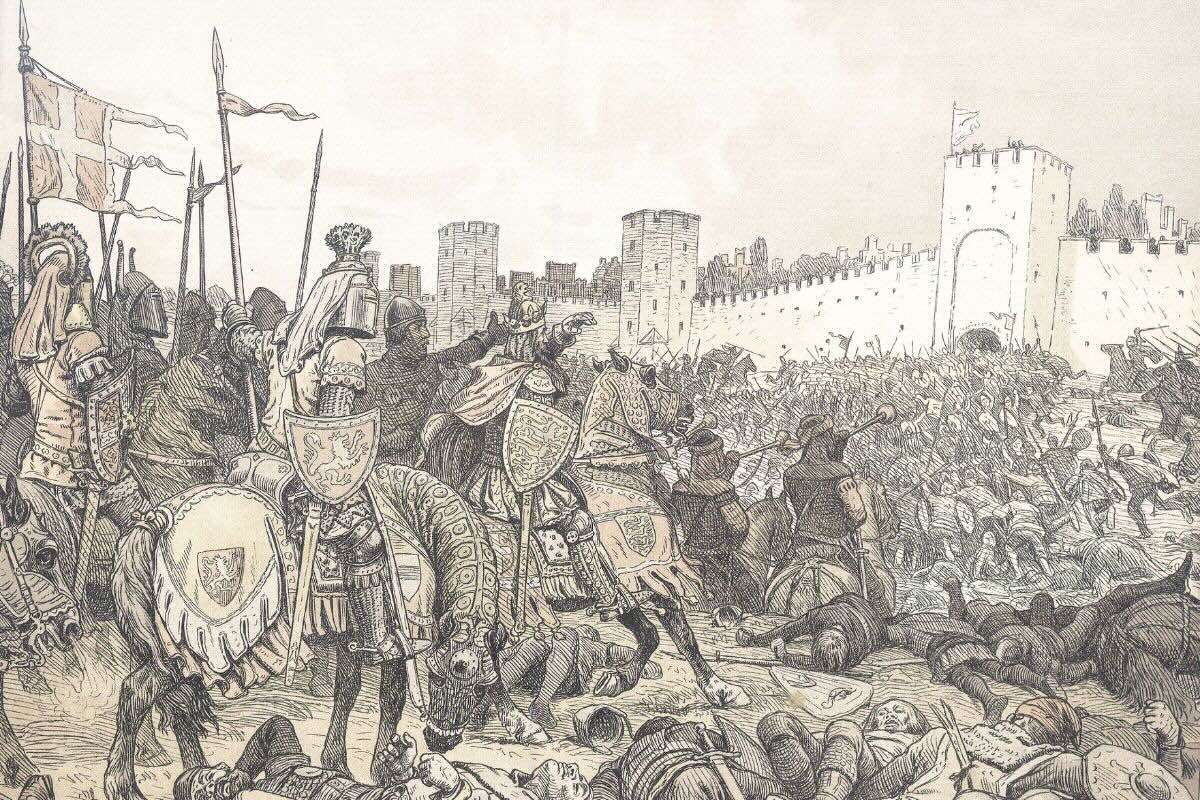
The Dano-Hanseatic War might not be the first conflict that comes to mind when thinking about historical battles, but it played a significant role in shaping Northern Europe. This war, fought between the Kingdom of Denmark and the Hanseatic League, was a clash of economic interests and political power. Ever wondered how a trade dispute could escalate into a full-blown war? Or why the Hanseatic League, a commercial and defensive confederation of merchant guilds, decided to take on a kingdom? Understanding the Dano-Hanseatic War offers a glimpse into medieval trade dynamics, naval warfare, and the struggle for dominance in the Baltic Sea. Buckle up as we dive into 25 intriguing facts about this lesser-known yet impactful war.
Key Takeaways:
- The Dano-Hanseatic War was a big fight over trade routes in the Baltic Sea. It changed who controlled the trade and made the Hanseatic League very powerful.
- The war made Denmark weaker and the Hanseatic League stronger. It also brought new ideas and technology to the region, and shaped how people thought about trade and conflict.
The Dano-Hanseatic War: An Overview
The Dano-Hanseatic War was a conflict between Denmark and the Hanseatic League, a powerful commercial and defensive confederation of merchant guilds and market towns in Northwestern and Central Europe. This war, which took place in the late 14th century, had significant impacts on trade and politics in the region.
- The Dano-Hanseatic War occurred between 1367 and 1370.
- The conflict was primarily over control of the Baltic Sea trade routes.
- Denmark, under King Valdemar IV, sought to expand its influence and control over these lucrative routes.
- The Hanseatic League, consisting of cities like Lübeck, Hamburg, and Bremen, opposed Denmark's expansionist policies.
- The war began after Denmark imposed heavy tolls on ships passing through the Øresund Strait.
Key Battles and Events
Several key battles and events shaped the course of the Dano-Hanseatic War. These confrontations determined the balance of power in the Baltic region.
- The Battle of Helsingborg in 1368 was one of the first major conflicts of the war.
- The Hanseatic League formed an alliance with Sweden and Mecklenburg to counter Denmark's power.
- In 1369, the Hanseatic League captured Copenhagen, a significant blow to Denmark.
- The Treaty of Stralsund, signed in 1370, ended the war.
- The treaty granted the Hanseatic League significant trading privileges and control over several Danish castles.
Impact on Trade and Economy
The war had profound effects on trade and the economy in the Baltic region. The outcomes of the conflict reshaped commercial dynamics for years to come.
- The Hanseatic League secured a monopoly over the Baltic Sea trade.
- Danish merchants faced restrictions and higher tariffs, limiting their economic power.
- The war disrupted trade routes, causing temporary economic downturns in affected regions.
- The Hanseatic League's victory solidified its dominance in Northern European trade.
- The conflict led to the decline of Danish influence in the Baltic region.
Political Consequences
The Dano-Hanseatic War also had significant political ramifications. The power dynamics in Northern Europe shifted as a result of the conflict.
- King Valdemar IV of Denmark was forced to recognize the Hanseatic League's authority.
- The war weakened Denmark's political and military power.
- The Hanseatic League's influence grew, leading to increased political clout in Northern Europe.
- The conflict fostered alliances between the Hanseatic League and other regional powers.
- The war set a precedent for future conflicts over control of trade routes in the Baltic Sea.
Cultural and Social Effects
Beyond trade and politics, the Dano-Hanseatic War also impacted the cultural and social landscape of the region. The war influenced various aspects of daily life and societal structures.
- The war led to increased cultural exchanges between Hanseatic cities and Denmark.
- The conflict spurred advancements in naval technology and shipbuilding.
- The war's end brought about a period of relative peace and stability in the region.
- The Hanseatic League's dominance fostered a sense of unity among its member cities.
- The war's legacy influenced future generations' perceptions of trade and conflict in Northern Europe.
The Dano-Hanseatic War in a Nutshell
The Dano-Hanseatic War was a pivotal conflict that shaped Northern Europe’s history. This war, fought between the Kingdom of Denmark and the Hanseatic League, highlighted the struggle for control over trade routes and economic dominance. The war's outcome significantly impacted the balance of power in the region, with the Hanseatic League securing favorable trade terms and Denmark experiencing a shift in its maritime policies.
Understanding this war offers insights into medieval trade dynamics, political alliances, and the economic strategies of the time. The conflict also underscores the importance of naval power and the strategic value of controlling key ports and waterways. By examining the Dano-Hanseatic War, one gains a deeper appreciation for the complexities of medieval warfare and the intricate web of alliances that defined the era. This war remains a testament to the enduring influence of trade and commerce on global politics.
Frequently Asked Questions
Was this page helpful?
Our commitment to delivering trustworthy and engaging content is at the heart of what we do. Each fact on our site is contributed by real users like you, bringing a wealth of diverse insights and information. To ensure the highest standards of accuracy and reliability, our dedicated editors meticulously review each submission. This process guarantees that the facts we share are not only fascinating but also credible. Trust in our commitment to quality and authenticity as you explore and learn with us.
